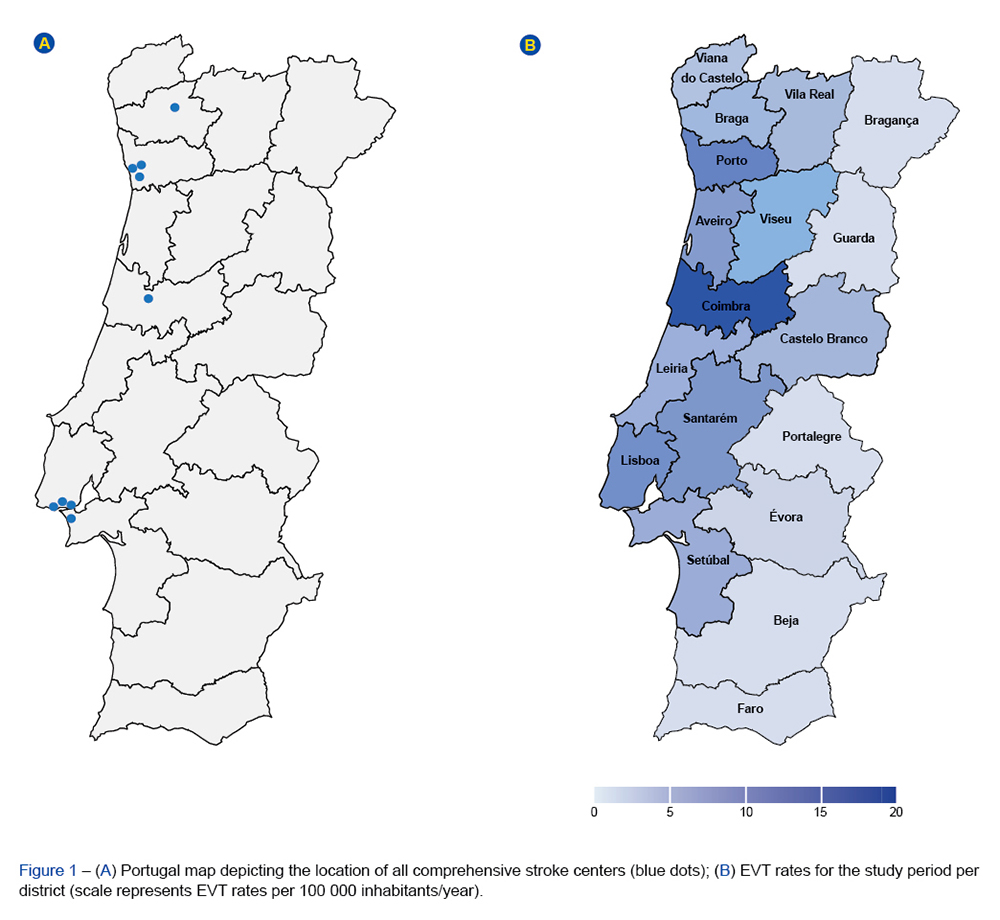SOCIAL MEDIA
Portuguese Medical Association's Scientific Journal

Introduction: Since the publication of endovascular treatment trials and European Stroke Guidelines, Portugal has re-organized stroke healthcare. The nine centers performing endovascular treatment are not equally distributed within the country, which may lead to differential access to endovascular treatment. Our main aim was to perform a descriptive analysis of the main treatment metrics regarding endovascular treatment in mainland Portugal and its administrative districts.
Material and Methods: A retrospective national multicentric cohort study was conducted, including all ischemic stroke patients treated with endovascular treatment in mainland Portugal over two years (July 2015 to June 2017). All endovascular treatment centers contributed to an anonymized database. Demographic, stroke-related and procedure-related variables were collected. Crude endovascular treatment rates were calculated per 100 000 inhabitants for mainland Portugal, and each district and endovascular treatment standardized ratios (indirect age-sex standardization) were also calculated. Patient time metrics were computed as the median time between stroke onset, first-door, and puncture.
Results: A total of 1625 endovascular treatment procedures were registered. The endovascular treatment rate was 8.27/100 000 inhabitants/year. We found regional heterogeneity in endovascular treatment rates (1.58 to 16.53/100 000/year), with higher rates in districts closer to endovascular treatment centers. When analyzed by district, the median time from stroke onset to puncture ranged from 212 to 432 minutes, reflecting regional heterogeneity.
Discussion: Overall endovascular treatment rates and procedural times in Portugal are comparable to other international registries. We found geographic heterogeneity, with lower endovascular treatment rates and longer onset-to-puncture time in southern and inner regions.
Conclusion: The overall national rate of EVT in the first two years after the organization of EVT-capable centers is one of the highest among European countries, however, significant regional disparities were documented. Moreover, stroke-onset-to-first-door times and in-hospital procedural times in the EVT centers were comparable to those reported in the randomized controlled trials performed in high-volume tertiary hospitals.